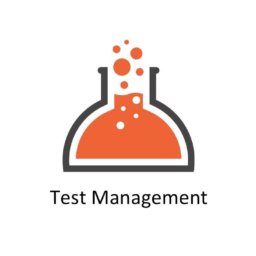Why do you use test management tools?
Software development and distribution must keep up with the growing demand for speed from users. It is important for testing processes to keep up with it. Is it possible for us testers to ignore big flaws and make errors as a result of it? Yeah, but by using appropriate test management techniques, we can efficiently reduce the number of bugs we ignore.
What are test management tools, and how do you use them?
Before I clarify why you need a test management tool, let me first define what one is. Test management systems are used by software development teams to keep track of anything they need to handle, schedule, execute, and report tests. There are numerous test management tools available, but the majority of them allow for both manual and automated testing. You can handle test environments with many of these tools. Test management tools like Kualitee have another important function in addition to preparing, scheduling, auditing, and running tests: they serve as an effective archive for errors that must then be handled.
Consider your requirements before selecting a tool.
To begin with, you shouldn’t use the same method for anything. Just because a tool has a lot of features doesn’t mean it’ll be suitable for your project. It’s often better to go for something simpler, easier to execute, and less expensive. Concentrate on achieving a real profit for you and the team working on your app.
So, when determining which test management method to use, what do you consider?
- The number of users who should be targeted
- Implementation ease
- Integrations with other software development tools are available.
- Grouping of test cases
- Monitoring of the tasks
- Reporting and review using visuals
- Framework integration and automated tests
- Integration that is ongoing
- Import/export capabilities
- Plan for storage
- Matrix of traceability
- API checks and integration
- Price Support
The fact that I mention the price at the end is not by chance. The price is a relative term, and the cost you pay for the tool can turn out to be too big or just right for other projects, depending on your needs.
Your requirements can, of course, change. As a result, when selecting a tool, you should consider how easy it is to change or add new modules.
The test control software can be used for a variety of reasons.
Here are some reasons why you should consider using test management software if you aren’t already doing so.
First and foremost, you want to increase the software’s efficiency. If you’re reading this, it’s because you want to make sure your application is of high quality. You satisfy the needs and expectations of your application users by delivering high-quality applications. This is most likely one of the most critical objectives. Test management tools are a great help to project teams because they help them prevent losing errors that were saved “somewhere in the excel file.”
Human error, especially in software development, is unavoidable. Luckily, test management tools make it simple to cover as much functionality in the application as possible. Consider what you’d be able to do if you didn’t have the correct test management software.
All errors are saved in a text or calculation format. At the same time, people at various levels of the company will work on the same file. They can simultaneously edit, add details, and delete this file. In this scenario, there’s a good chance that testers will overlook a crucial flaw or test.
On the other hand, by preparing clear and correct reports, such tools would help you to avoid repeat testing of the same errors. Accurate documentation saves the team a lot of time in locating the mistake in the application and making it easier to reproduce it.
And you want to be well-informed about everything. It’s not just about writing and checking code when it comes to creating applications. Creation, design, programming, and testing are all part of the software development process. Reports on the current situation at each point of software development enable fast responses and potential force transfers to the appropriate location. Previous task reports are equally relevant. When developing an application, it’s common to need to go back to previous documents or fix errors so you need to know what tests were run and when.
You’ll be able to see the tests at any level if you use a test management program.
You can make key decisions more quickly if you grasp the testing stage of your project. You’ll be able to figure out where the project stands based on a careful examination of the tests performed. It’s possible that you’ll want to speed up or postpone the release of the new version of the application based on this information in order to improve the team’s productivity and avoid doing the same work.






